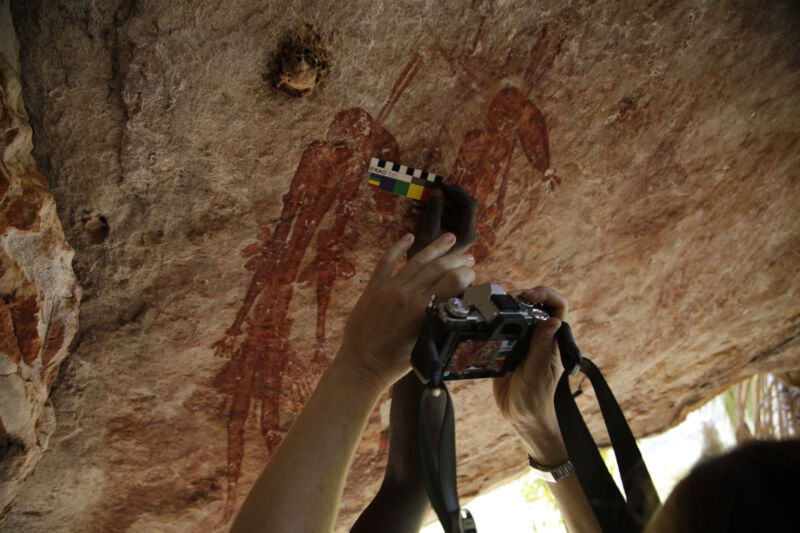Old wasp nests help us understand old art

Enlarge (credit: Mark Jones)
Tens of thousands of ancient paintings adorn rock outcrops and shelters in the Kimberley region of Western Australia. At some sites, layers of art on rock walls record a sequence of styles and motifs that changed over thousands of years. In about the middle of that sequence, a style called Gwion depicts people in elaborate clothes and headdresses; the figures are often carrying boomerangs, spears, bags, and ornaments.
"The paintings are like a diary to me and my people," Ian Waina, a member of the Kwini traditional owners of the region, told the Australian Broadcasting Corporation. But neither the region's traditional owners nor archaeologists are sure exactly how old the Gwion figures are or just where they fit into the timeline relative to other types of rock art in the area. "Everyone wants to find out how old the painting is," Waina told ABC. "They just say this is from the 'old people.' They know the stories, they are keeping those stories, but who is that story from? Is it from our older, older, older people?"
To figure out a more exact age, University of Melbourne archaeologist Damien Finch and his colleagues-including the land's traditional owners, the Kwini and the Balanggarra Aboriginal Corporation-turned to an unlikely source: the remains of mud-wasp nests.
Read 14 remaining paragraphs | Comments